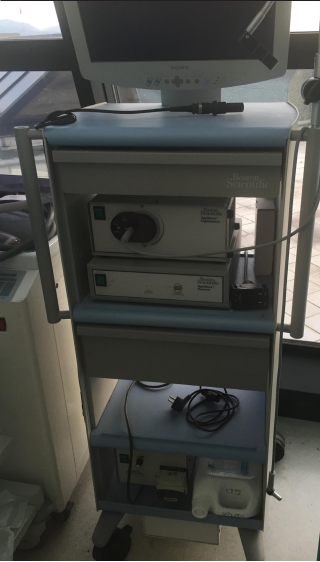Background/Aims: The use of cholangioscopy for the diagnosis and treatment of hepatobiliary diseases is gradually becoming more common. We aimed to review our peroral cholangioscopy interventions, using the first-generation SpyGlass Direct Visualization System (SDVS) and summarize our experience in terms of procedures and results.
Materials and Methods: Forty-one patients who underwent this procedure at our Gastroenterology Clinic between February 2010 and October 2014 were included in this study. Patients were monitored for a median (IQR) of 44 (range 38–72) months. Demographic characteristics of these patients, results of the radiological and biochemical evaluation performed prior to the procedure, cholangioscopy findings together with the data relating to the procedure, histopathological diagnosis, clinical findings and results, and their effects on patient prognosis were assessed.
Results: In total, 41 patients underwent 46 cholangioscopy procedures. Of them, 21 (51.2%) were male. The most frequent clinical indications for cholangioscopy was the need to further investigate indeterminate stricture (n=16; 39%) and indeterminate filling defect (n=7; 17.1%). The procedure was considered successful in 39 patients with 41 (95.1%) receiving diagnostic and 33 (80.5%) receiving therapeutic benefits. The sensitivity and specificity for SVDS-guided biopsies and brush cytology were 80% and 87.5%; 26.6% and 75%, respectively. Complications related to the procedure occurred in a total of three patients (7.3%), two with cholangitis and one with perforation of gall bladder.
Conclusion: Our experience shows that cholangioscopy procedures, performed with SDVS, are clinically applicable and safe in the diagnosis and treatment of hepatobiliary diseases.
Cite this article as: Hülagü S, Şirin G, Duman AE, Yılmaz H. Use of SpyGlass for peroral cholangioscopy in the diagnosis and treatment of hepatobiliary diseases in over five years follow-up: A single centre experience. Turk J Gastroenterol 2019; 30(12): 1044-54.




.png)
.png)
